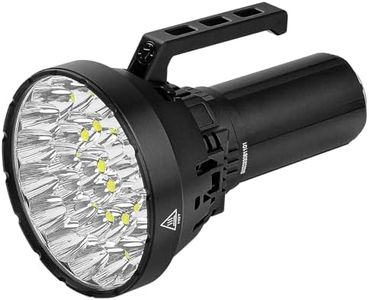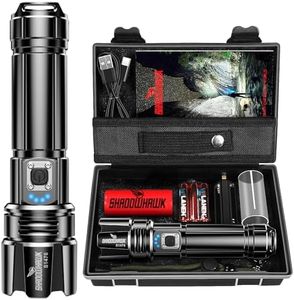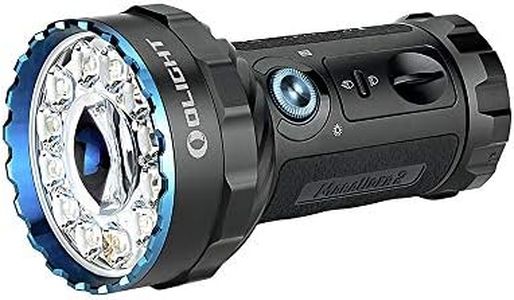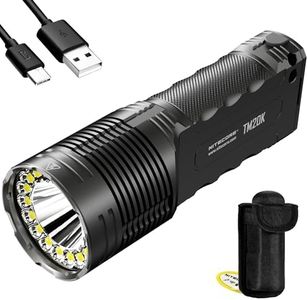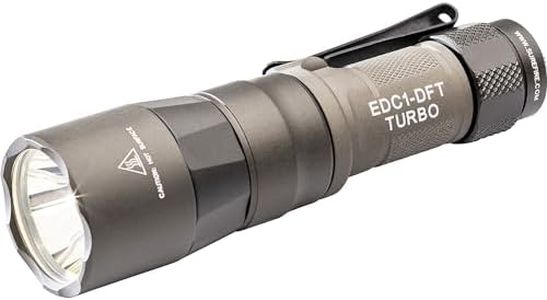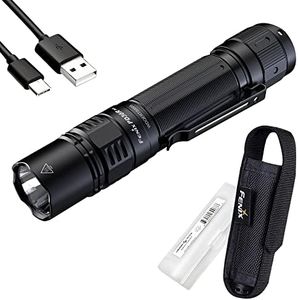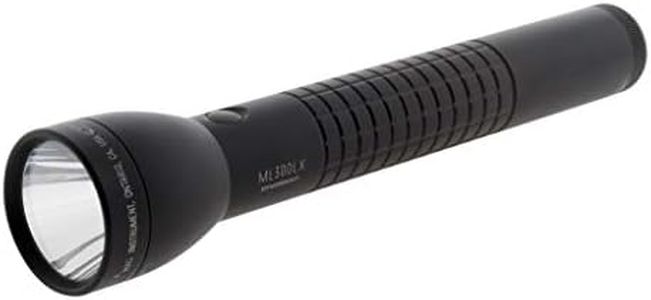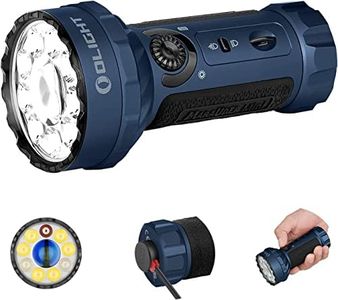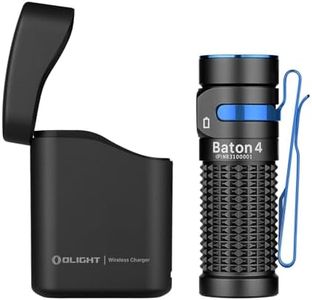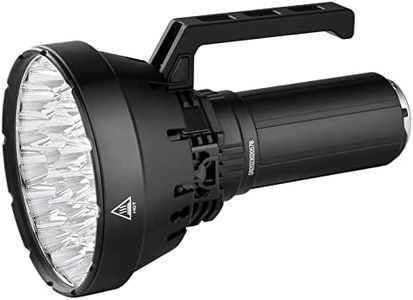We Use CookiesWe use cookies to enhance the security, performance,
functionality and for analytical and promotional activities. By continuing to browse this site you
are agreeing to our privacy policy
10 Best Brightest Flashlights
From leading brands and best sellers available on the web.Buying Guide for the Best Brightest Flashlights
When searching for the brightest flashlight, it's essential to think about what you'll be using it for and the situations in which you'll need powerful illumination. The best choice combines the right level of brightness with manageable size, convenience, and features that match your intended uses. The goal is to find a flashlight that shines powerfully without being unnecessarily bulky or difficult to handle. It's also wise to consider things like durability and battery life so that your flashlight performs reliably when you need it most.Lumens (Brightness)Lumens measure the total amount of light emitted by a flashlight. The higher the lumens, the brighter the flashlight will be. For everyday tasks like walking the dog or finding keys, 50–300 lumens are usually sufficient. For outdoor adventures or search and rescue, you might need 1,000 lumens or more. If you just want maximum brightness for wide-open visibility, look at lights with very high lumen counts, but remember that higher brightness often means faster battery drain and possibly a larger flashlight.
Beam DistanceBeam distance tells you how far the light can effectively shine before it fades out. This is important for activities like hiking, camping, or searching across a field, where reaching long distances is helpful. Short-range beams (under 100 meters) are good for general tasks, while medium-range (100–250 meters) and long-range (over 250 meters) serve for outdoor and professional use. Choose a beam distance that matches where you'll use the flashlight most often.
Battery Type and RuntimeBattery type affects how often you need to recharge or replace batteries, and runtime indicates how long your flashlight will work between charges or battery changes. Flashlights can use disposable batteries, built-in rechargeable batteries, or removable rechargeables. If you need long use without recharging—like on trips—prioritize longer runtime. Rechargeable lights are convenient if you can regularly access power. Match the battery style and expected runtime to your planned uses.
Size and WeightThe size and weight of a flashlight impact how comfortable it will be to carry and use. Larger, heavier flashlights often provide more brightness and longer runtimes but can be cumbersome for everyday carry. Smaller lights are easier to pack and handle but may not shine as far or as bright. Pick a size that strikes the best balance between power and portability for your needs.
Durability and Water ResistanceDurability refers to how well the flashlight handles drops, impacts, and rough use, while water resistance tells you if it can survive rain or accidental submersion. For outdoor activities, emergencies, or professional use, look for models with a solid build and rated for water resistance (often marked as IPX4 for splashes or IPX7/IPX8 for submersion). If you’ll use the flashlight mainly indoors, basic durability may suffice.
Modes and FeaturesMany flashlights offer different modes such as strobe, SOS, or variable brightness levels. These features mean you can adjust the light output for different situations, saving battery life or adapting to emergencies. If you like flexibility, look for adjustable settings; if you prefer simplicity, fewer modes may be easier to use. Decide which modes and extra features matter for how you plan to use the flashlight.
